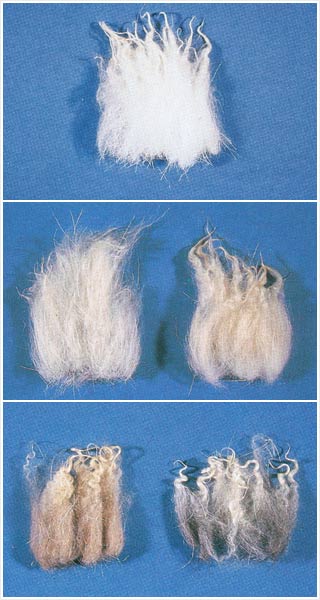The Exciting World of cashmere: Understanding Its Composition and Uses
The Exciting World of cashmere: Understanding Its Composition and Uses
Blog Article
Checking Out the Numerous Kinds of Cashmere a Natural Fiber for Ultimate High-end
Cashmere, a natural fiber, is commonly related to high-end and convenience. However, not all cashmere is produced equivalent. From the richly soft Mongolian selection to the lightweight warmth of Indian Pashmina, each kind offers its very own distinct functions and attraction. The more affordable Chinese cashmere, the conventional Scottish version, and the premium Italian blend, all tell a different story of this exceptional fiber. As we untangle the world of cashmere, a deeper understanding of its true value and class starts to arise.
Comprehending the Lavish Nature of Cashmere
Cashmere, frequently associated with high-end and comfort, holds a distinct appeal worldwide of natural fibers. This soft, lightweight material is coveted for its remarkable warmth and remarkable resilience. Unlike various other natural fibers, cashmere combines insulation with breathability, offering unparalleled convenience throughout differing temperatures. Its lustrous coating and soft appearance add to its high-end charm, validating the premium cost that typically features cashmere garments. Additionally, cashmere's inherent crease resistance and flexibility improve its desirability, making it a preferred selection for premium clothes and devices. Regardless of its delicate appearance, cashmere has an unusual resilience, able to preserve its form and glamorous feel with time. This special blend of features cements cashmere's position as an icon of beauty and extravagance.
Just What Is Cashmere and Where Does It Come From?

Cashmere is derived from the soft undercoat of cashmere goats, mostly discovered in Mongolia, China, Iran, and Afghanistan. This thorough procedure adds to the shortage and high expense of cashmere. With its beginning in the severe landscapes of Asia, cashmere is a testament to nature's capacity to generate high-end from adversity.
Deciphering the Different Kinds Of Cashmere
Comprehending the different kinds of cashmere is crucial to valuing the high quality and distinct characteristics of this luxurious textile. Typically, cashmere is categorized right into three kinds: raw, virgin, and recycled. Decoding these kinds is the first action in understanding the exclusivity and worth of cashmere.

The Special Features of Each Kind of Cashmere
Having explored the different categories of cashmere, it emerges that each kind flaunts its special set of features. Mongolian cashmere, as an example, is renowned for its remarkable high quality, as a result of Mongolia's severe wintertimes that create longer and finer fibers. Alternatively, Chinese cashmere is typically a lot more cost effective, though its much shorter fibers can minimize resilience. Scottish cashmere is celebrated for its beautiful softness, an outcome of the traditional water washing process making use of click for more Scotland's soft water. Italian cashmere, at the same time, is well-known for its masterful blending and tinting techniques, providing it functional and dynamic. Indian cashmere, additionally understood as Pashmina, is treasured for its unbelievable lightness and heat. Each kind, thus, adds to the fabric's reputation for high-end.
Why Cashmere Is the Embodiment of Luxury in Style
Cashmere holds a well-regarded position in the world of style, regarded as a symbol of luxury and sophistication (is cashmere a natural fiber). Cashmere is derived from the fine undercoat of Himalayan goats, known for their superior quality fiber. Cashmere's unrivaled comfort and sturdiness make it an in-demand product in the development of high-end garments.
The Process of Making Cashmere: From Goat to Garment
The journey of cashmere, from being an undercoat of a Himalayan goat to an extravagant garment, is a complex one. With the development of spring, farmers in Mongolia and China collect the woollen by brushing the goats, making sure no damage is done. The acquired woollen contains rugged outer hair and soft downy undercoat. This mix is after that meticulously separated, with just the soft down made use of for cashmere. This raw cashmere is washed, dyed and rotated into yarn. The thread is then woven or knitted right into materials. The final action entails cleaning and pressing to provide the fabric its particular gentleness and warmth. From goat to garment, each step is a testimony to the perseverance, creativity and ability associated with crafting cashmere.

Conclusion
To conclude, cashmere, with its all-natural elegance and unparalleled convenience, preponderates worldwide of high-end fashion. The variety in types, ranging from the soft Mongolian, light-weight Indian Pashmina, affordable Chinese, typical Scottish, to the vibrant Italian, exposes the versatility of this all-natural fiber. The meticulous process of changing it from a goat to a click over here garment even more adds to its exclusivity, making cashmere the embodiment of elegance and deluxe.
Cashmere, an all-natural fiber, try here is frequently linked with high-end and comfort (is cashmere a natural fiber).Cashmere, commonly connected with deluxe and comfort, holds an unique appeal in the world of natural fibers. Unlike various other natural fibers, cashmere combines insulation with breathability, supplying exceptional convenience across differing temperatures. Cashmere is acquired from the soft undercoat of cashmere goats, mainly located in Mongolia, China, Iran, and Afghanistan. Cashmere is obtained from the great undercoat of Himalayan goats, known for their premium quality fiber
Report this page